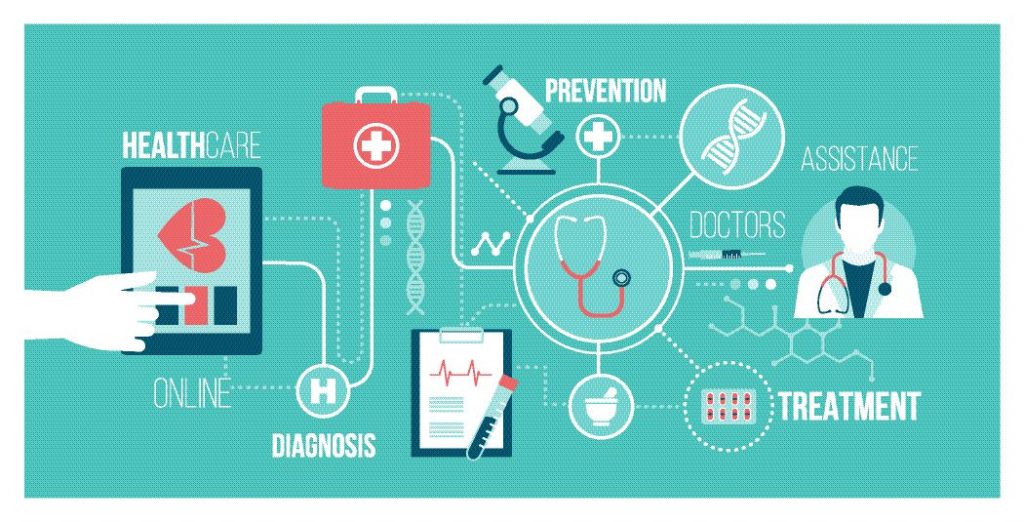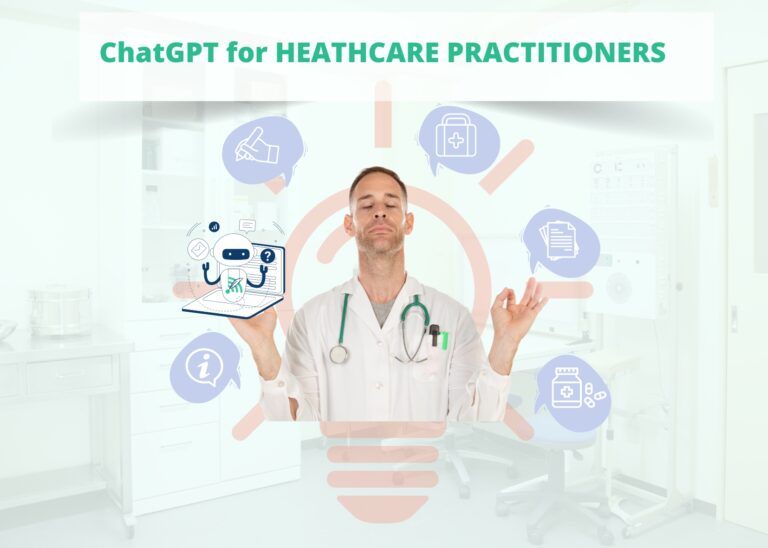Recently emerging as a primary approach to healthcare, patient-centric care (PCC) focuses on cultivating a partnership between patients and healthcare professionals. It acknowledges the patients’ preferences and values, and seeks to move beyond the traditional paternalistic approach to healthcare. Read more about PCC here.
Because of this rise in popularity, today’s healthcare audiences (including your prospective and current patients) have become sophisticated consumers. There is a certain expectation of service when it comes to healthcare, and a feeling that care should be delivered with a sense of immediacy and convenience.
PCC can be easy to convey and demonstrate during a face-to-face consultation, but what about your website, which is likely a patient’s first interaction with your healthcare providing organization? Does your website put your audience first? Is it adapted for the new generation of mobile-first consumers? Is your website patient-centric?
If you’re not sure, use the below checklist to determine how optimized your site is, and bring it up to patient-centric standards.
1. Is my website responsive and fast?
Individuals seeking medical information or care are most likely to start with an online search, more than 2/3 of them, and most of them will begin with a mobile device. It’s also no secret that mobile-friendly websites are rewarded with improved search rankings by Google. By ensuring that your website is optimized for smaller screens, you’re helping your facility rise to the top of search results and making it more likely that a prospective patient will visit your site.
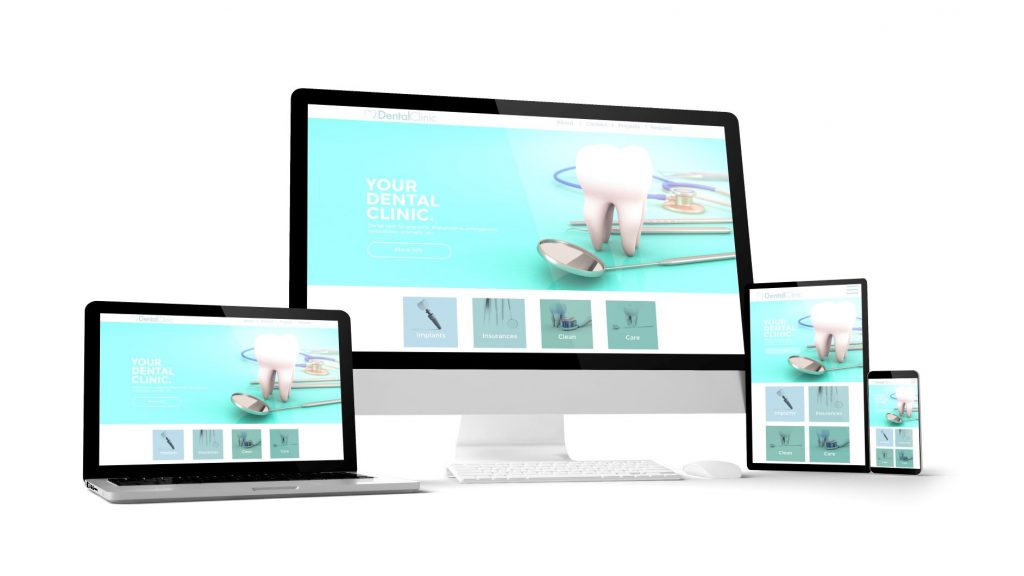
After their initial search, patients will also use mobile devices to locate and select facilities, as well as interacting with prospective providers. It should be your website’s goal to make it easy for visitors to access the information they need in a timely manner, whether on mobile or desktop. Responsive design keeps visitors on the page by providing information in a clear format, even on smaller screen sizes.
Finally, it should be common knowledge that a slow-loading website is unacceptable in this day and age. Internet-reliant visitors expect web pages to load instantly, so don’t stuff your landing pages with ‘bulky’ content or hide important information at the bottom of the page
2. Is my website search engine optimized?
An individual searching for healthcare services often needs to find relevant answers quickly. A strong SEO strategy anticipates search queries based on popular keywords, audience pain-points and helpful solutions.
While SEO is one of the most demanding tasks involved in running a website, it’s arguably the most important. Your organization must be continually learning and updating your strategy, as search engine ranking methods are constantly changing. What worked last month may not necessarily work today. If you’re not sure where to start, tools like Google Search Console or SEMrush can help you to stay on top of your SEO efforts.
3. Does my website offer modern user features?
When assessing the quality of your website, consumers are not just comparing you to other healthcare sites. Your website is being measured against every other site on the internet, including industry leaders such as Amazon, eBay and Tripadvisor.
Because of this, a patient-centric website also requires state-of-the-art user features such as site navigation, live chat, and personalization that your audience can relate to. All of these factors add to an exceptional user experience, improving a visitor’s impression of your organization as a whole.
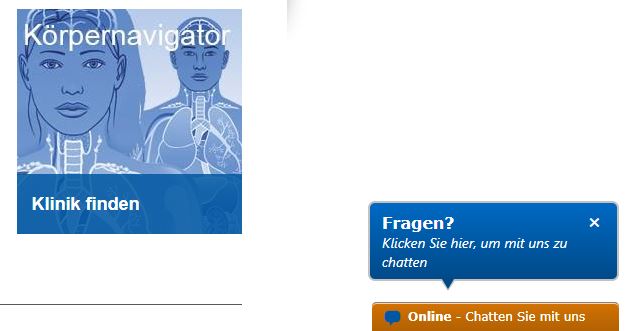
Source: Screenshot – USZ Zürich – Example of Live Chat
4. Is my website content up-to-date?
Although seemingly obvious, you may be surprised at how many websites leave out-of-date content live on their homepage. Not only is this information irrelevant to patients, it gives the impression that your organization is poorly-run and out-of-date.
Past event announcements, last year’s holiday greetings or general business updates can linger around for many months, discouraging visitors who are looking for state-of-the-art service. Your organization is constantly changing, so ensure that your service offerings, list of physicians and other resources are changing at the same pace.
5. Is my website content easy to understand?
Many healthcare websites are, understandably, written by healthcare providers. This means that the content is created by specialists and experts in their field, writing at a graduate degree level. If you want your content to connect with the majority of your visitors, consider writing as if you were speaking to high school students. Aim to create content that is appealing and can be easily understood, while still being informative.
Break down complex topics into smaller chunks, include an FAQ section or glossary. Website visitors have no tolerance for jargon and indecipherable acronyms. Keep in mind that your audience are likely not experts in the medical field. Tone down the terminology and speak to your consumers as human beings, as the example of Hirslanden nicely demonstrates.
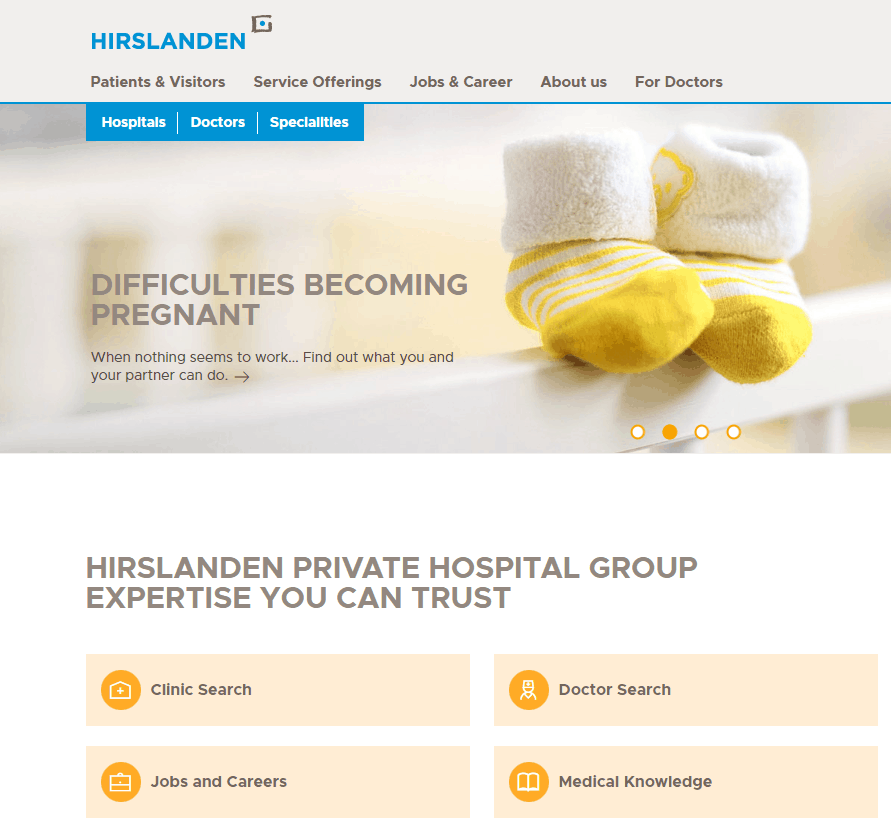
Source: Screenshot – Hirslanden Private Hospital
6. Does my website offer downloadable/printable content?
When people are researching healthcare topics, they often prefer to print information, enabling them to read more thoroughly or share details with friends and family. This is understandable due to the complex nature of medical content, but often overlooked. To make your website more patient-centric, ensure all materials are printer-friendly and easily downloadable.
7. Does my website leverage video?
Healthcare audiences are embracing video when it comes to learning more about medical conditions, available services and healthcare solutions. Video is more engaging, easier to digest and connects you with your audience in a more meaningful way than could be achieved with written content alone.
Make sure your website provides video content to answer questions, explain medical conditions and discuss treatment options. Also use video that features your facilities, staff and consenting patients to forge an emotional connection with your viewers.
8. Does my website demonstrate the quality of our organization and services?
Healthcare websites are thoroughly scrutinized by consumers as part of their decision-making process in choosing a healthcare provider. After optimizing your informative medical content, think about what details your website offers that demonstrates your ability to deliver high quality care. This could include testimonials, recent award wins or any new equipment you have available.
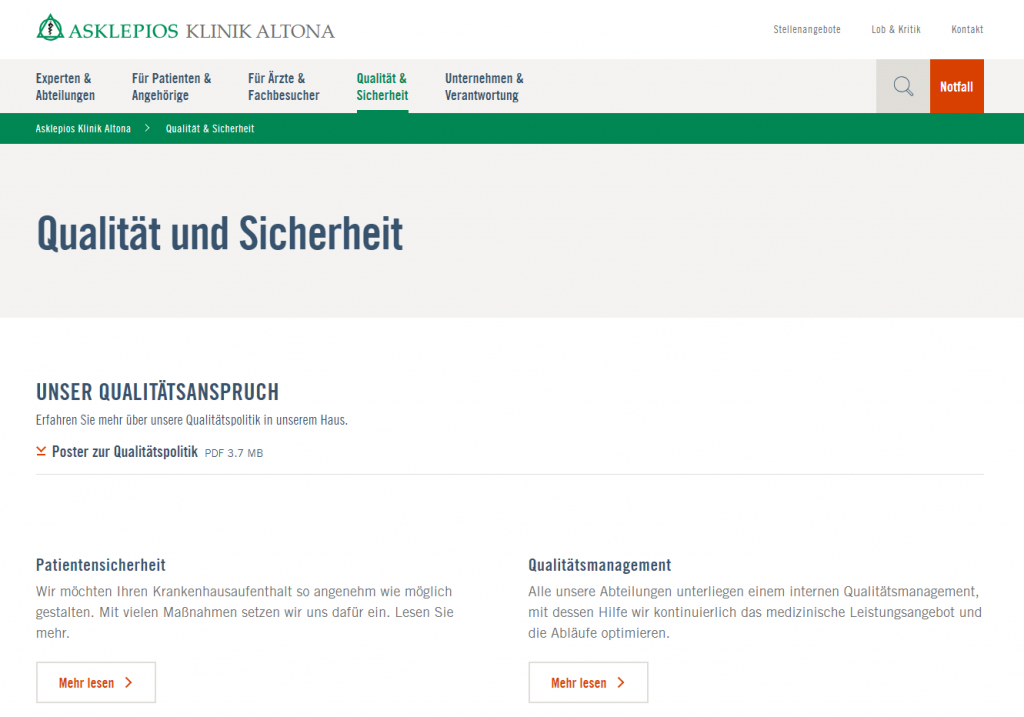
Source: Screenshot – Asklepios Klink Altona
9. Does my website facilitate access to care solutions?
Navigating through a badly designed healthcare website is like finding your way through a labyrinth. For many users, it’s easier to exit the page and try somewhere else. Your website should be intuitive and easy to navigate so that your audience can find the information they are looking for with ease.
Information needs to be arranged and presented in a patient-first manner, with additional details for the more interested consumers in an easy to follow user journey. Put yourself into your patient’s shoes; what information would you want or need when visiting a healthcare provider’s website? This is a much better approach than posting only the information your organization wants to promote. A good example, as mentioned in our previous post is the CHUV Lausanne webpage.
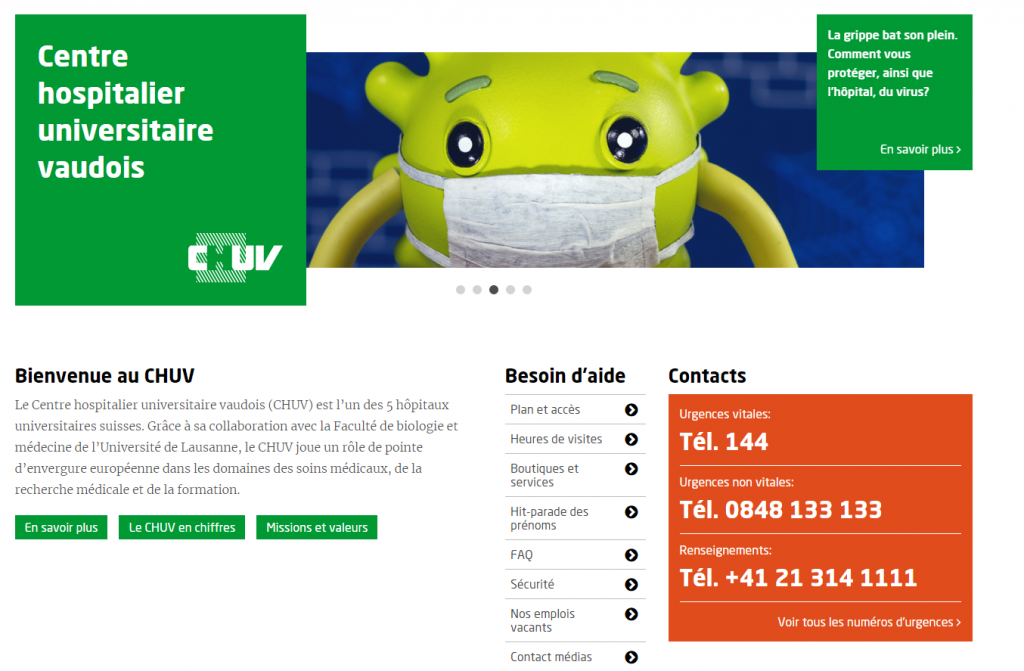
Source: Screenshot – CHUV Lausanne
Make sure that every page of your website offers links to learn more and to access your services. This could be a telephone number, live chat feature, appointment booking software, email subscription or registration for upcoming events. Patient-centric websites lead audiences to take the next step in accessing care and healthcare solutions.
10. Is my website designed and written from the perspective of the patient journey?
Patient-centric websites provide relevant, meaningful content at all touchpoints of the patient journey. That is information that serves to build overall awareness, helps consideration, creates intent to choose services, and provides information to those patients currently receiving medical care.
Map out user journeys for each section of your site, and have helpful buttons to guide patients through information, from diagnosis through to treatment and post-care.
11. Is my website compassionate?
Try to put yourself into your audience’s shoes. When seeking medical information or care, patients are in need. Both physically and emotionally. Patients may feel overwhelmed, confused and put off by the amount of online information available, or nervous about the diagnosis for themselves or loved ones. Always ensure that your website content is written from a calm and compassionate perspective, reassuring your audience that they are in the best hands. Just as you would do in a face-to-face consultation.
Zig Ziglar once said, “People don’t care how much you know until they know how much you care”. Whilst your website visitors may later be interested in details around current technology or clinical achievements, they won’t get to this stage without first trusting that you understand what they are going through and have their best interests at heart.

So, where to start then?
Design or update your patient-centric website so pertinent information and details about your services, and how you can help to reduce your audience pain-points, are always accessible.
Prominently display a phone number and other contact details on every page, be available to reply quickly when someone reaches out, and ensure all staff members know how to respond to enquiries. Patients in need don’t want to wait or spend time searching for information, especially when alternative options are a mere click away.
Of course, this checklist is by no means comprehensive, but it’s a great place to start when making your website more patient-centric.
Feel free to add more checkpoints/tips in the comments section below, or discuss what you found most useful when receiving feedback from your audience. We are looking forward to your input!
And don’t hesitate to reach out to medtextpert if you need help in making your website more patient-centric, sometimes small adjustments can have a significant impact.

